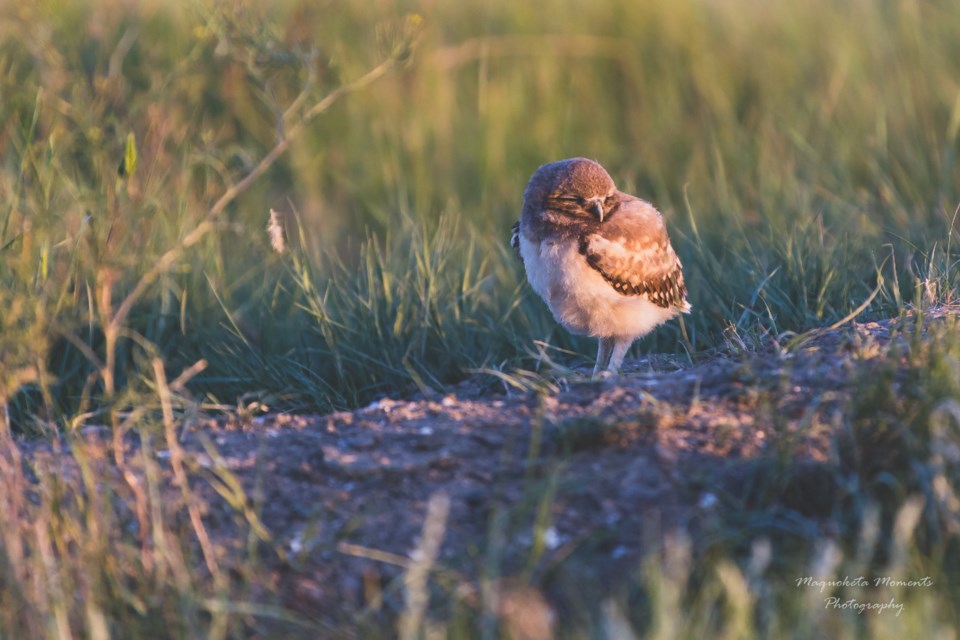It’s that time of year again, young Burrowing Owls have begun to leave their nests! For the past several weeks, juvenile owls have been carefully tended to and fed by their parents. Now they are independent and ready to learn how to fly and hunt for themselves. Late July and August is a great time of year to spot the owls out and about or perched on fence posts, but it is also a dangerous time for the juveniles.
At this point in their lifecycle, the Burrowing Owls are a bit like teenagers - they are keen to be independent but lack experience. The juveniles tend to forage for food on the road and in the ditch. Kaytlyn Burrows, a Nature Saskatchewan Habitat Stewardship Coordinator, suggests this is because “at dusk the road surface tends to be warmer than surrounding grasslands, attracting many small insects and rodents and as a result, young owls are also attracted and they begin searching for prey.” For this reason, the juveniles are at a greater risk of collision with vehicles. Motorists can prevent collisions by reducing their speed and keeping an eye out for Burrowing Owls on or near the road.
Burrowing Owls can be identified by their mottled brown and white feathers, their stilt-like legs, and of course their bright yellow eyes. The birds are about the size of a robin with a height of about 9 inches, but they have large wings compared to the rest of their small body. They are commonly found in native or tame grasslands and will use the burrows of badgers, ground squirrels, and other burrowing mammals for nesting.
Launched in 1987, Operation Burrowing Owl is one of Canada’s longest running conservation programs and aims to conserve the remaining parcels of land used by Burrowing Owls in Saskatchewan. Through voluntary landowner agreements, the program also monitors the population of this endangered species. If you have Burrowing Owls on your land or just happen to see one, please call 1-800-667-HOOT (4668). The program coordinator, Kaytlyn Burrows, says, “you will be helping to monitor the population and aid with conservation efforts.” Personal information is never shared without permission.




